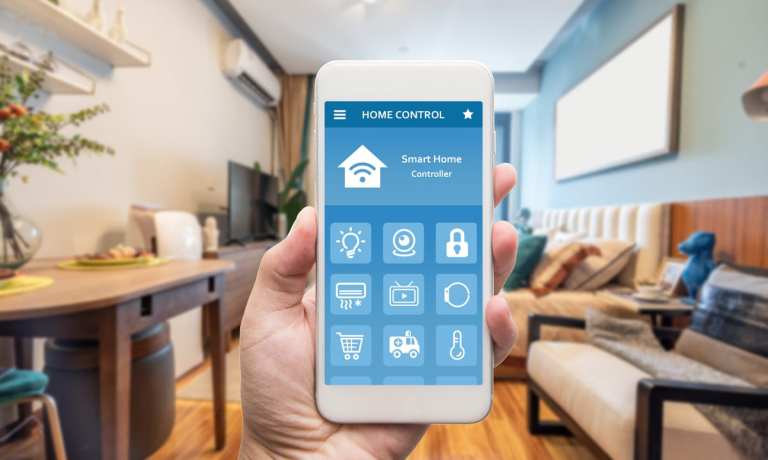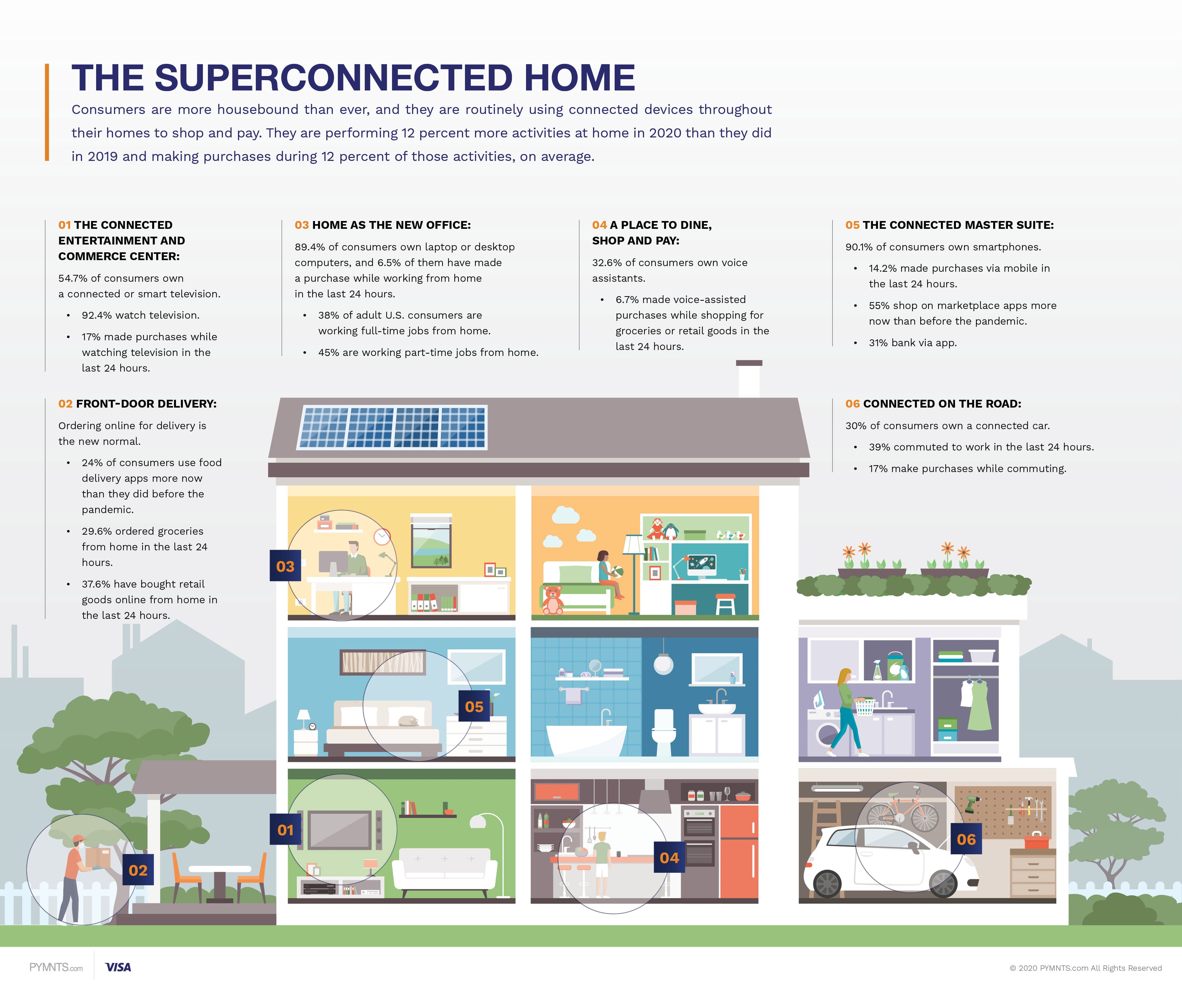
Talking to yourself has never looked so normal than in superconnected homes that have come together so nicely in 2020 despite — or perhaps because of — the COVID-19 crisis.
A three-way race is on this holiday gifting season between Apple, Amazon and Google for market share in the voice-assistant segment, which aims to remake homes into “smart” dwellings that almost run themselves as we transact more through voice AIs.
Many have been consumers busy doing home improvements during lockdowns, running the gamut from textiles to decor to voice-controlled climate and security systems. If more comfy homes are the look of the COVID-19 recovery, then smart assistants will be the voice of that effort as well.
What are people asking their super-smart homes to do? Buy stuff, for one thing.
PYMNTS recently reported on new data from Security.org showing that 91 percent of consumers own at least one smart home device, and that 64 percent said they were planning to buy a new type of smart home technology within the next year. That helps explain how people were making and paying for purchases from their increasingly superconnected homes.
“Approximately twice as many consumers shopped for retail products from home in the summer of 2020 as they did in the summer of 2019, and three times as many grocery shopped from home this summer over last summer,” according to the latest How We Will Pay report, a PYMNTS and Visa collaboration. “Twenty-three million consumers, meanwhile, used voice assistants to make purchases. This means that the share of consumers making purchases who do so via voice assistant is up 42 percent since 2018 and up 10 percent since 2019.”
Bridge Millennials Lead The Way
With that kind of uptick, the major players are moving voice commerce squarely to the center of connected-home initiatives that are built around convenience, control and security.
News broke this week of Amazon’s new upgrade that turns its Fire tablets into remote controls for smart homes using Alexa. For its part, the Google Nest home-automation system added enhancements over the summer that include doorbell cameras and even a clothing styler.
Expanding what voice assistants and home automation can do is in line with trending consumer preference, particularly among high-earning bridge millennials.
“Bridge millennials are the first generation of consumer to have grown up with connected devices on hand, and they therefore feel comfortable using the technologies to shop and pay,” according to the latest How We Will Pay report. “Bridge millennials are old enough to have established themselves professionally, and these digital-first shoppers are settling down and building households powered by connected devices that allow them to browse, shop and pay from the safety and comfort of home.”

Making Outside Connections
Accelerated by the pandemic, the automated, voice-controlled smart home is having far-reaching impacts on everything from dining to travel.
For instance, dining looms large in connected homes amid COVID-19 because travel is down precipitously and restaurants are still working on restricted terms. The How We Will Pay study noted that nearly three-quarters of respondents (73 percent of consumers surveyed) are eating lunch at home these days. That’s up some 30 percent from 2019.
However, a great many of the lunches and dinners eaten at home were prepared elsewhere in 2020, which brought about the great mobile order-ahead wave, as well as the work-from-home migration that seems to have employees settling in rather than heading back to workplaces.
“[Consumers] are turning to a host of connected devices to perform their day-to-day activities, ranging from smartphones and laptops to voice assistants and everything in between,” according to the How We Will Pay study. “Forty-two million U.S. consumers (30 percent) are now grocery shopping using a variety of connected devices, while 46 million (38 percent) are shopping for retail products — without ever leaving the confines of their homes.
In essence, connected devices are helping to turn consumers’ homes into smart commerce command centers.